
Journal of Surface Investigation
Scope & Guideline
Connecting Scholars to the Latest in Surface Investigations
Introduction
Aims and Scopes
- Surface Characterization Techniques:
The journal emphasizes advanced surface characterization methods, including but not limited to X-ray diffraction, scanning electron microscopy, and neutron reflectometry, to investigate the structural and chemical properties of materials. - Nanostructured Materials:
A core area of research involves the synthesis and characterization of nanostructured materials, exploring their unique properties and potential applications in various fields, including electronics and photonics. - Ion Beam Modification:
The journal frequently publishes studies on ion beam techniques for modifying surface properties, enhancing material performance, and investigating ion-solid interactions. - Material Behavior under Extreme Conditions:
Research focusing on the behavior of materials under extreme conditions (e.g., temperature, pressure, and radiation) is a significant theme, contributing to the understanding of material stability and degradation. - Mechanoluminescence and Photoluminescence:
Investigations into luminescent properties of materials, including mechanoluminescence and photoluminescence, are explored, revealing insights into electronic states and defect structures. - Composite and Multilayer Structures:
The journal also covers the design and analysis of composite and multilayer structures, investigating their mechanical, thermal, and electrical properties for potential applications.
Trending and Emerging
- Machine Learning Applications:
There is an increasing trend towards applying machine learning techniques to predict material behaviors, optimize processes, and analyze complex datasets, indicating a shift towards data-driven research methodologies. - Sustainable and Green Materials:
Research on sustainable materials and environmentally friendly processes is gaining traction, reflecting a broader societal push towards sustainability in materials science. - Advanced Surface Functionalization:
Studies focusing on advanced surface functionalization techniques, including self-assembled monolayers and bio-inspired modifications, are on the rise, aimed at enhancing material properties and performance. - Smart Materials and Devices:
The emergence of research into smart materials that respond to external stimuli, such as temperature or light, is becoming more prominent, showcasing their potential applications in sensors and actuators. - High-Performance Coatings:
There is a notable increase in research addressing the development of high-performance coatings that improve wear resistance, corrosion protection, and thermal stability, particularly in extreme environments.
Declining or Waning
- Traditional Bulk Material Studies:
Research centered on bulk properties of materials is waning, as there is a greater emphasis on surface-specific phenomena and nanoscale investigations, which provide more relevant insights for modern applications. - Static Surface Studies:
The focus on static or equilibrium surface properties has decreased. There is a growing interest in dynamic processes and real-time monitoring of surface changes under various conditions. - Conventional Coating Techniques:
Studies that rely solely on traditional coating techniques without innovative modifications or applications are becoming less prominent, as the journal seeks to highlight more advanced and effective methodologies. - Basic Theoretical Models:
While theoretical modeling remains important, there is a trend away from simplistic models towards more complex, computationally intensive simulations that can better account for the intricacies of surface phenomena.
Similar Journals

e-Journal of Surface Science and Nanotechnology
Pioneering Discoveries in Surface ScienceThe e-Journal of Surface Science and Nanotechnology, published by the SURFACE SCI SOC JAPAN, stands as a pivotal platform for the dissemination of groundbreaking research in the fields of surface science and nanotechnology. With an ISSN of 1348-0391 and a commitment to open access publication since 2003, this journal ensures that innovative findings are accessible to a global audience, fostering collaboration among researchers, professionals, and students. The journal spans a wide array of disciplines, as evidenced by its 2023 category quartiles, which include Q3 rankings in Biotechnology and Mechanics of Materials, as well as Q4 standings in Bioengineering, Condensed Matter Physics, and various surface-related fields. This diverse scope makes it an essential resource for those engaged in advanced scientific research and applications. The journal’s unique position within its categories—Ranging from Q3 to Q4 in various Scopus rankings—highlights its niche yet vital contribution to advancing knowledge in both fundamental and applied sciences. By continually converging from 2005 to 2024, the e-Journal of Surface Science and Nanotechnology embodies the integration of innovative studies and novel applications that drive the future of material sciences.

Russian Physics Journal
Pioneering Insights in Physics and AstronomyRussian Physics Journal is a reputable publication in the field of Physics and Astronomy, published by SPRINGER. With its history dating back to 1990, it has provided a platform for disseminating significant research findings while fostering academic dialogue within the scientific community. The journal, identifiable by its ISSN 1064-8887 and E-ISSN 1573-9228, offers a diverse range of articles that cover various aspects of physics, although it currently holds a Q4 category ranking in the 2023 quartile system, placing it within the lower tier of its field. Researchers and students can benefit from its insights despite the journal's ongoing evolution, striving to improve its impact as it ranks #194 out of 243 in the General Physics and Astronomy category on Scopus. While the journal does not offer open access options, its archived content remains crucial for those seeking to enhance their understanding of contemporary physics challenges. Located at ONE NEW YORK PLAZA, SUITE 4600, NEW YORK, NY 10004, UNITED STATES, the Russian Physics Journal continues to play a role in the academic landscape, contributing to the body of knowledge that drives innovation and exploration in the physical sciences.
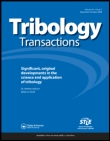
TRIBOLOGY TRANSACTIONS
Innovating Surface Science Through Pioneering ResearchTRIBOLOGY TRANSACTIONS is a leading journal published by Taylor & Francis Inc, serving as a crucial platform for researchers and practitioners in the fields of mechanical engineering, mechanics of materials, and surface science. With an ISSN of 1040-2004 and an E-ISSN of 1547-397X, this journal features pioneering research and comprehensive studies that span from 1988 to 2024, reflecting its longstanding commitment to advancing knowledge in tribology and its related disciplines. The journal holds a respectable Q2 ranking in its categories, with impressive scores in major databases, as indicated by its Scopus ranking. Although not an Open Access journal, its strategic focus on innovative tribological solutions makes it essential reading for anyone involved in material interactions, surface engineering, and related technologies. Researchers, professionals, and students alike will find valuable insights that drive advancements in these critical areas of study, reinforcing the journal’s position as a key resource in the academic and applied engineering communities.
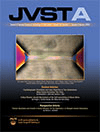
JOURNAL OF VACUUM SCIENCE & TECHNOLOGY A
Unveiling Breakthroughs in Coatings and Films.JOURNAL OF VACUUM SCIENCE & TECHNOLOGY A, published by the esteemed American Institute of Physics, is a leading journal in the field of materials science and applied physics, with an ISSN of 0734-2101 and an E-ISSN of 1520-8559. This publication serves as a vital platform for researchers and professionals focused on condensed matter physics, surfaces and interfaces, as well as coatings and films, contributing significantly to our understanding of vacuum technology and its applications. With a commendable Q2 ranking in key categories such as Condensed Matter Physics and Surfaces and Interfaces, the journal showcases rigorous research that pushes the boundaries of science and technology. The journal is particularly noted for its impact within the community, holding impressive Scopus rankings that highlight its relevance and influence. Although not an Open Access journal, it remains a crucial resource for academics seeking high-quality, peer-reviewed articles from 1970 through 2024. We invite you to explore the latest advancements and innovative findings that this journal presents, positioning you at the forefront of research in vacuum science.
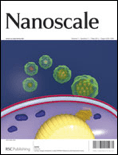
Nanoscale
Connecting Global Minds in Nanoscience.Nanoscale is a premier academic journal published by the Royal Society of Chemistry, dedicated to advancing the field of nanoscience and nanotechnology. With both its ISSN (2040-3364) and E-ISSN (2040-3372) ensuring wide accessibility, the journal is renowned for its high-impact research contributions, reflected in its impressive 2023 Impact Factor and prestigious Q1 ranking in both Materials Science (Miscellaneous) and Nanoscience and Nanotechnology categories. Since its inception in 2009, Nanoscale has fostered a collaborative platform where leading researchers from around the globe share their innovative findings across a multitude of topics spanning from material synthesis to applications in nanotechnology. The journal not only serves as a valuable resource for professionals, researchers, and students but also actively engages the academic community in discussing emerging trends, thus shaping the future of nanoscience. Situated in the heart of the UK at Thomas Graham House, Science Park, Milton Rd, Cambridge CB4 0WF, Nanoscale remains a key publication for those looking to keep abreast of the latest breakthroughs in an ever-evolving field.

APPLIED PHYSICS A-MATERIALS SCIENCE & PROCESSING
Pioneering Research in Materials Science and ProcessingApplied Physics A: Materials Science & Processing, published by Springer Heidelberg, is an esteemed academic journal that has been at the forefront of innovative research since its establishment in 1995. With a strong focus on the intersection of physics, materials science, and engineering, this journal explores cutting-edge developments and applications that influence contemporary materials research. Categorized in the Q2 quartile across both Chemistry and Materials Science, it boasts respectable rankings in Scopus, affirming its influence and reach within the academic community. Although primarily a subscription-based journal, it is dedicated to disseminating high-quality research findings that advance our understanding in these fields. Researchers, professionals, and students alike can benefit from the journal's commitment to publishing comprehensive studies, methodological advancements, and insightful reviews that push the boundaries of knowledge in materials science.

Surface Innovations
Exploring the Frontiers of Surface ScienceSurface Innovations, an esteemed journal published by Emerald Group Publishing Ltd, serves as a crucial platform for researchers and professionals working within the fields of Materials Chemistry, Process Chemistry and Technology, and Surfaces, Coatings and Films. Launched in 2013, this journal has garnered attention for its commitment to advancing knowledge and innovation, holding a distinguished Q3 ranking in multiple categories as of 2023. With a focus on the latest methodologies and applications in surface science, Surface Innovations not only facilitates the dissemination of cutting-edge research but also encourages interdisciplinary collaboration among scientists and engineers. While not an open-access journal, it offers numerous options for accessibility to engage a wide array of audiences, making it a valuable resource for those looking to expand their understanding and expertise in this rapidly evolving field. The journal's consistent inclusion in high-ranking Scopus categories further underscores its academic impact and relevance.

Acta Metallurgica Sinica-English Letters
Innovating Industrial Engineering Through Rigorous Scholarship.Acta Metallurgica Sinica-English Letters, published by the Chinese Academy of Sciences, Institute of Metal Research, is a premier international journal that has been fostering the advancement of knowledge in the fields of Industrial and Manufacturing Engineering and Metals and Alloys since its inception in 1997. With a commendable impact factor and ranking within the top quartiles (Q1) of leading Scopus categories, this journal serves as a vital platform for researchers and professionals to disseminate innovative research findings and groundbreaking methodologies. Notably recognized with a Scopus rank of #34 out of 176 in Materials Science and rank #81 out of 384 in Engineering, it provides a robust space for high-quality, peer-reviewed articles, thus bridging the gap between theoretical advancement and practical application in metallurgy and materials science. Although currently not an open-access journal, its rigorous editorial standards and comprehensive scope ensure that only the most impactful research contributes to the scientific community and industry advancements globally. Acta Metallurgica Sinica-English Letters is an essential read for anyone eager to stay informed on cutting-edge developments within these crucial domains.
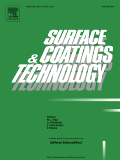
SURFACE & COATINGS TECHNOLOGY
Transforming Ideas into Advanced Coating SolutionsSURFACE & COATINGS TECHNOLOGY is a premier academic journal that has been at the forefront of research and innovation since its inception in 1986, diligently published by Elsevier Science SA. With an impressive range of studies focusing on surface and coatings technologies, the journal has established itself as a leading platform within the fields of Chemistry, Condensed Matter Physics, and Materials Science. Notably, it holds a distinguished Q1 ranking in multiple categories, showcasing its relevance and high impact in the academic community. Furthermore, it is recognized for its rigorous peer-review process and is indexed in esteemed databases, maintaining its strong position with a ranking of #17 in Surfaces, Coatings, and Films. Although the journal does not currently offer open access options, it continues to be a crucial resource for researchers, professionals, and students seeking insights into cutting-edge developments and applications in the domain of surface engineering. With a commitment to advancing knowledge across these disciplines, SURFACE & COATINGS TECHNOLOGY is an essential read for anyone interested in the latest trends and technologies shaping the industry.
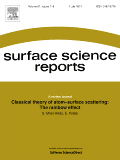
SURFACE SCIENCE REPORTS
Advancing the Frontiers of Surface KnowledgeSURFACE SCIENCE REPORTS, published by Elsevier, is a premier journal dedicated to the field of surface science, exhibiting exceptional rigor and relevance in its contributions. With its ISSN 0167-5729 and E-ISSN 1879-274X, this journal has maintained an influential presence since its inception in 1981 and is set to continue its impactful trajectory through 2024. Recognized with a Q1 classification across multiple related disciplines—including Chemistry, Condensed Matter Physics, and Materials Science—it consistently ranks among the top journals, as evidenced by its impressive Scopus rankings, like #4 in Surfaces and Interfaces and #6 in Metals and Alloys. This positions the journal as a critical resource for researchers and professionals seeking cutting-edge insights into the interactions, properties, and applications of surfaces and interfaces. Although the journal follows a traditional subscription model, its comprehensive reviews and scholarly articles make it an invaluable asset for advancing knowledge in this dynamic field. By choosing to publish in SURFACE SCIENCE REPORTS, authors join a distinguished community pushing boundaries in the understanding and technological advancements related to materials and their surface characteristics, fostering collaboration and innovation worldwide.